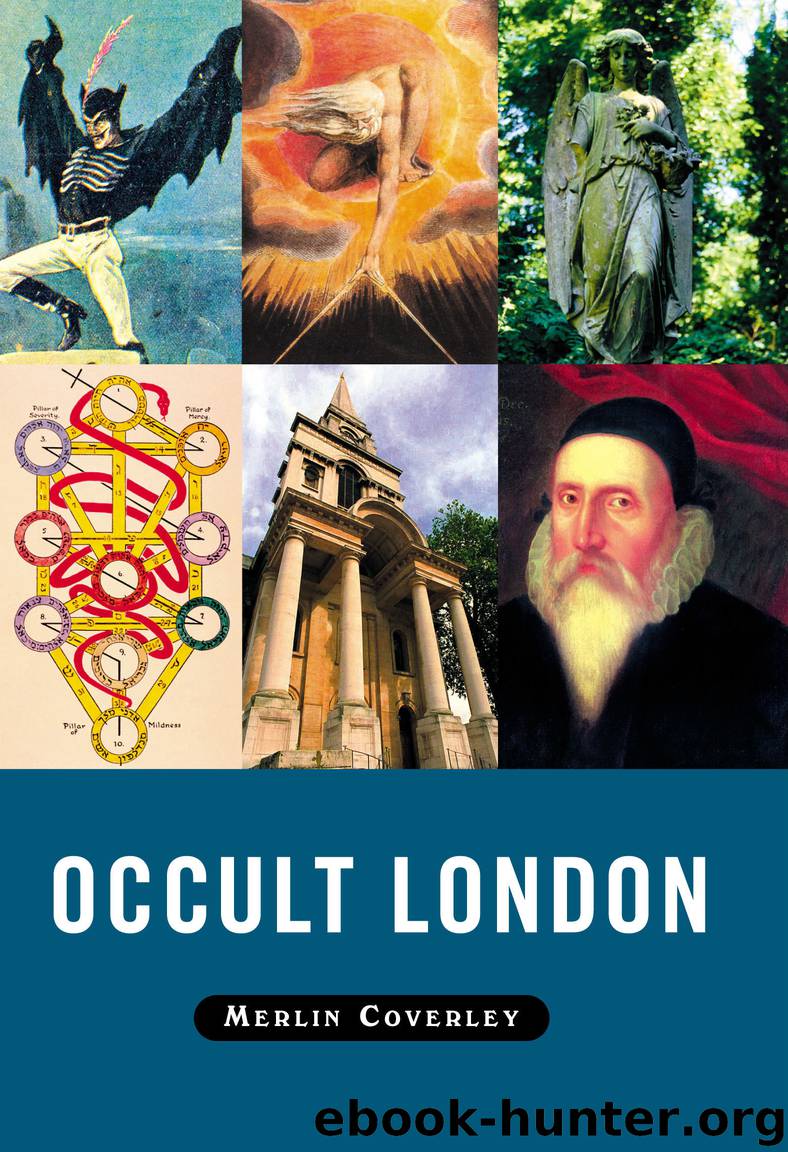Occult London by Merlin Coverley

Author:Merlin Coverley
Language: eng
Format: epub
Tags: History
Publisher: Oldcastle Books
Published: 2012-05-28T16:00:00+00:00
The Hermetic Order of the Golden Dawn
(1888–1914)
If Theosophy came to displace Spiritualism as the dominant esoteric movement in late Victorian London, it was, in turn, soon to be eclipsed by the emergence of a movement that was to have a profound influence upon the course of cultural life in the coming century. Indeed, according to the historian Alex Owen, the Golden Dawn, or to be more precise, the Hermetic Order of the Golden Dawn, ‘has done more than any other Order to influence the development of modern magic in Britain, Europe and the United States during the course of the twentieth century.’19
Typically of such an occult institution, its origins remain unclear and subject to conflicting accounts, but it appears that the Hermetic Order of the Golden Dawn came into existence in February 1888 through the establishment of its first temple, Isis-Urania, in London. The responsibility for the birth of this fledgling movement lies with three men: the government coroner and amateur occultist, William Wynn Westcott (1848–1925), his fellow Freemason and Rosicrucian, Dr William Robert Woodman (1828–1891) and the author of The Kabbala Unveiled, Samuel Liddell Mathers (1854–1918). As the story goes, at some time in the mid-1880s, the Reverend Alphonsus Woodford, a writer on Masonic matters, came into possession of what was to become known as the ‘cipher manuscript’.20 Woodford himself was unable to decipher the documents, which were written in a cipher and accompanied by a similarly encoded letter, but he passed them on to Westcott. By 1887, Westcott, with the assistance of Woodman and Mathers, had managed to decode them both, discovering that the manuscript outlined the details of five initiatory magical rituals. The letter was from Anna Sprengel, a Rosicrucian living in Stuttgart and a member of a secret society called Die Goldene Dämmerung, translated by Westcott as the Golden Dawn. In the correspondence that ensued between Westcott and Sprengel, and which lasted until Sprengel’s death in 1890,Westcott, along with Mathers and Woodman, were charged with the task of establishing a Golden Dawn temple to enact the magical rituals detailed in the manuscript.
A less enticing explanation for the emergence of the Golden Dawn, but one which dispenses with the need for Anna Sprengel, a continental occult secret society and a deciphered manuscript, is the view that Westcott simply invented the lot, hoping to form a rival to the Theosophical Society (the emergence of which, many would claim, was the result of Madame Blavatsky’s similarly vivid imagination).21 But, fraudulent charade or not, recruitment to this new society began in 1888 and, by the end of that year, 51 members had been enrolled, rising to 126 by 1891, 48 of whom were women. It appears that the Golden Dawn’s gain was to prove the Theosophical Society’s loss, with news of this rival organisation posted in letters to the Theosophical Society’s journal, Lucifer, as well as through a word of mouth campaign which attracted followers from both Theosophy and the Rosicrucian Society of England, established some 20 years earlier, in 1866, by Robert Wentworth Little.
Download
This site does not store any files on its server. We only index and link to content provided by other sites. Please contact the content providers to delete copyright contents if any and email us, we'll remove relevant links or contents immediately.
Animal Frequency by Melissa Alvarez(4379)
Sigil Witchery by Laura Tempest Zakroff(4159)
Real Magic by Dean Radin PhD(4059)
Fingerprints of the Gods by Graham Hancock(3915)
Journeys Out of the Body by Robert Monroe(3551)
Aleister Crowley: The Biography by Tobias Churton(3549)
The Rosicrucians by Christopher McIntosh(3450)
Alchemy and Alchemists by C. J. S. Thompson(3433)
Mysteries by Colin Wilson(3375)
Hitler's Monsters by Eric Kurlander(3251)
The Hatha Yoga Pradipika (Translated) by Svatmarama(3196)
John Dee and the Empire of Angels by Jason Louv(3119)
Wicca: a guide for the solitary practitioner by Scott Cunningham(3113)
Infinite Energy Technologies by Finley Eversole(2907)
Book of Life by Deborah Harkness(2844)
Dark Star Rising by Gary Lachman(2812)
The Book of Lies by Aleister Crowley(2786)
Aliens by Jim Al-Khalili(2771)
To Light a Sacred Flame by Silver RavenWolf(2749)
